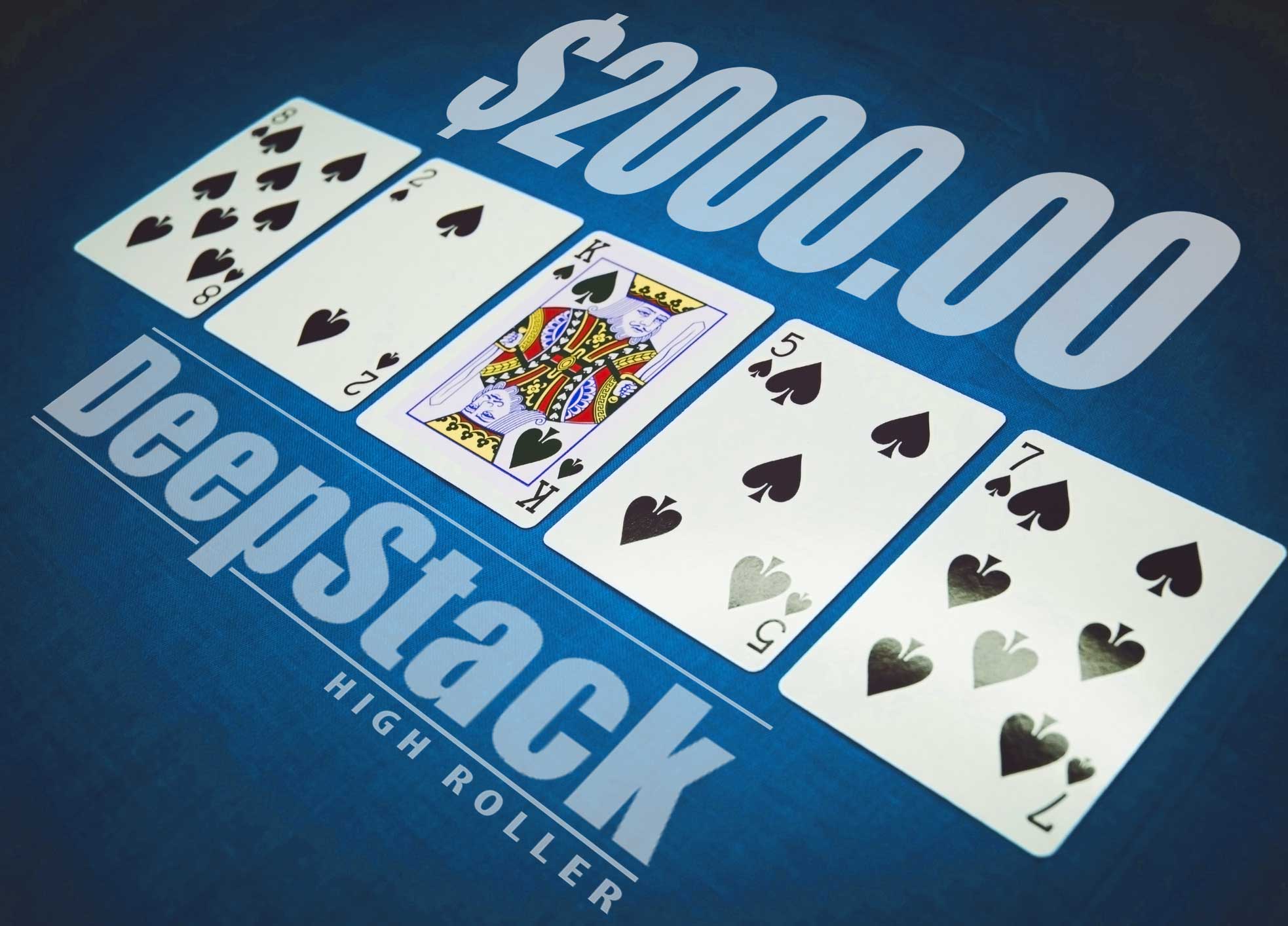Deep Stack Tournament Strategy
Texas Holdem poker tournaments might be the greatest innovation in poker in the past half-century. With a small (and pre-determined) investment poker players can experience the unique thrill of running deep, stacking up chips and ultimately playing for both a life-changing payday and the title of sole survivor. In poker, a 'deep stack tournament' is a tournament where players start off with a large amount of chips relative to the size of the blinds. For instance, in a traditional tournament, players might start off with 5,000 chips and blinds may begin at 25/50, with antes being added later in the tournament. In a deep stack tournament, players might. Tip 2: Be Stack Size Aware. Effective stack size plays a critical role in a tournament players success. Having a deep stack, and therefore expanding an opening range to include a lot of speculative suited hands and small pairs is a tournament strategy that is going to be punished if a number of short stacks are yet to act behind.
Play Where US Players are Welcome!BetOnline Accepts players from the USA, and has soft games compared to Pokerstars and Full Tilt.
>>Play at BetOnline Now (US Players Accepted)!<<Deep Stack Tournament Strategy
In Deep Stack tournaments the number of chips you start with is greater in comparison to regular freezeout MTTs. The blind levels are also twice as long, which makes them preferred by tight/conservative and skilled players who adopt a small ball game. It also reduces the risks and variance of MTTs by allowing you to play under less pressure.
In a typical deep stack tournament you will receive 5,000 starting chips with 10/20 blinds. Compare this to turbo MTTs structures at PokerStars (which give you 500 or 1,000 chips at 10/20 blinds) and you can see the difference immediately.
Best Site for Deep Stack Tournaments: Titan Poker – $500 Bonus!

Deep Stack Poker Tournament Strategy

The best site for non-US players to play Deep Stack tournaments is Titan Poker. They now run the exciting European Deep-stack Championship III, and have a number of regular deepstack tournaments along with deepstack satellites from $3 – $10 entry fees.
For US players PokerStars is the site we recommend for deep stack tournaments. Each day PokerStars runs deepstack tournaments with buy-ins of $10 -$30. The biggest deepstack event at PokerStars takes place on Saturdays with a buy-in of $100.
Deep Stack Tournament Strategy

Because deep stack tournaments run differently to regular online tournaments you need to slow down your game
The first thing noticeable in deep stack tournaments (e.g. WSOP) is that aggressive players who are not used to the format will make too many re-raises and all-in moves pre-flop. This won’t be as effective in deep stack tournaments because fewer players will call you. Most of the time any player who calls you will have you beat.
Re-raises are less effective because the stack sizes are much deeper. In the beginning of a regular online tournament a re-raise to 300 chips may represent 30% of your chips (starting on 1,000). However, in deepstack tournament starting on 5,000 chips this will represent only 6% of your chips. Thus making it less likely to call. Players who do this too often tend to become frustrated.
There are 3 basic approaches to accumulating chips in deepstack events:
The first is playing passively. This means limping into many flops and seeing as many as possible. Your aim is to exploit your opponents weaknesses in post-flop play, and this in itself requires excellent post-flop reading ability on your part. Rather than setting a trap, you’re really just waiting to corner a bad player. You’ll make big wins in these pots which compensate for the flops you missed.
The second type of strategy is the small ball approach (utilized by Negreanu and Hansen). In deepstack tournaments small ball poker means seeing as many flops as possible while attempting to limit the size of pots and cost to see the next card. This is to reduce the risks and cost of play. You’re effectively trying to “slow” the play down and continually put pressure on your opponents by making moves first.
The third approach for deepstack tournaments is TAG play (tight aggressive). Under this strategy you’re only playing premium hands or others when in position. The goal is to make as much money in the pot pre-flop as possible, so your post-flop play doesn’t matter as much. This is an easier strategy to adopt for weaker tournament players.
Conclusion on playing Deep Stack Tournaments
Overall, deep stack tournaments are designed for “better” tournament players. Reading opponents and taking advantage of position is more important than blind stealing or being uber aggressive. Deepstack tournaments in many ways are more resembling of cash games than turbo MTTs/SNGs. Patience plays a bigger role than other tournaments.
Related articles:
Odd but true… this strategy may work early on in the tournament… but when blinds and antes start getting larger and larger after a couple of hours you must bet more aggressively and play a much wider range of hands. Although ‘small ball’ poker style may help conserve chips and help win smaller pots with not much competition against tight players that fold a lot; adopting a liberal raise and 3 to 4 betting style of play especially post flops are great ways to dramatically increase your chipstacks! That’s the way to play later on in tournaments… but you may find some loose cannon players early on that love donking off many chips around 25%-50% preflop and all of it on the river. Catching them and winning all their chips would be supremely awesome if you knew they are deliberately doing that to combat against ‘small ball betting strategies’… just got to put them on a their polarized hands and call or reraise them all in if you are 100% you have them loose cannons beat.
Leave a Reply

- $400
- $2000
Deep Stack Poker Tournament Strategy
T&C apply to bonus offerings